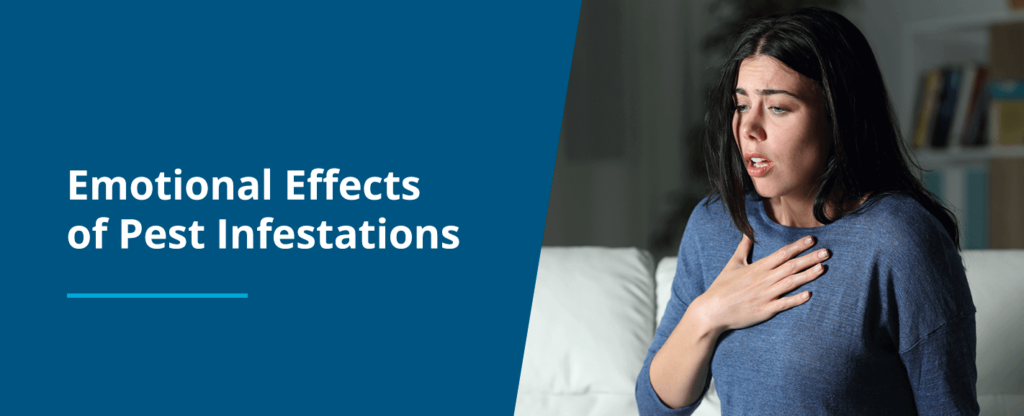All about Eco Bed Bug Exterminators Dc
Table of ContentsWhat Does Eco Bed Bug Exterminators Dc Do?Facts About Eco Bed Bug Exterminators Dc RevealedEco Bed Bug Exterminators Dc for DummiesThe Only Guide to Eco Bed Bug Exterminators DcThe Ultimate Guide To Eco Bed Bug Exterminators Dc
Due to the fact that chemicals are toxic, they are likewise possibly harmful to people, animals, various other organisms, and the setting. Therefore, individuals that use pesticides or frequently come in call with them need to understand the family member toxicity, prospective wellness impacts, and preventative procedures to reduce exposure to the products they use. Danger, or danger, of utilizing pesticides is the potential for injury, or the degree of danger involved in making use of a pesticide under a provided collection of problems.
Nonetheless, applicators can decrease or virtually eliminate exposure-- and therefore minimize risk-- by following the label guidelines, utilizing personal safety clothes and equipment (PPE), and handling the pesticide properly. More than 95 percent of all chemical exposures come from facial exposure, primarily to the hands and lower arms. By wearing a set of unlined, chemical-resistant handwear covers, this kind of exposure can be nearly removed.
The damaging impacts that occur from a single exposure by any route of access are called "severe results." The four paths of exposure are dermal (skin), breathing (lungs), dental (mouth), and the eyes. Acute toxicity is identified by examining the dermal poisoning, inhalation toxicity, and oral toxicity of guinea pig.
The Best Guide To Eco Bed Bug Exterminators Dc
Severe toxicity is determined as the quantity or concentration of a toxicant-- the a.i.-- called for to kill half of the animals in a test populace. This measure is usually expressed as the LD50 (deadly dosage 50) or the LC50 (lethal concentration 50). In addition, the LD50 and LC50 worths are based on a solitary dosage and are recorded in milligrams of pesticide per kilogram of body weight (mg/kg) of the guinea pig or in parts per million (ppm).
The lower the LD50 or LC50 value of a pesticide item, the better its toxicity to humans and pets. Chemicals with a high LD50 are the least toxic to humans if utilized according to the instructions on the product tag. The persistent toxicity of a chemical is determined by subjecting guinea pig to long-term direct exposure to the energetic ingredient.
The persistent toxicity of a chemical is harder than intense toxicity to identify with lab analysis. Products are classified on the basis of their family member intense poisoning (their LD50 or LC50 values). Pesticides that are identified as extremely toxic (Poisoning Category I) on the basis of either oral, facial, or breathing toxicity should have the signal words risk and toxin printed in red with a head and crossbones sign prominently presented on the front panel of the package label.
The intense (solitary dose) oral LD50 for pesticide items in this team varies from a trace total up to 50 mg/kg. Exposure of a couple of drops of a product taken orally could be deadly to a 150-pound person. https://www.easel.ly/browserEasel/14452085. Some pesticide items have just the signal word threat, which tells you absolutely nothing concerning the acute poisoning, simply that the product can create severe eye damages or serious skin irritability
What Does Eco Bed Bug Exterminators Dc Mean?
In this classification, the intense oral LD50 arrays from 50 to 500 mg/kg. A teaspoon to an ounce of this product might be fatal to a 150-pound person (bed bug treatment). Chemical products classified as either a little hazardous or reasonably nontoxic (Poisoning Classifications III and IV) are needed to have the signal word CAUTION on the pesticide tag

All pesticide toxicity values, including the LD50, can be found on discovered product's Item Safety Data Safety and security InformationMSDS). Pesticide labels and MSDS can be obtained from retailers or produces - https://ecobedbugexterminatorsdc0.godaddysites.com/f/bed-bug-treatment-effective-solutions-by-eco-bed-bug-exterminat. The symptoms of chemical poisoning can vary from a moderate skin irritation to coma or even death.
Individuals likewise differ in their sensitivity to different levels of these chemicals. Some people may reveal no response to a direct exposure that might cause extreme illness in others (bed bug heat treatment). As a result of possible wellness concerns, pesticide individuals and trainers must recognize the common indicators and signs of chemical poisoning. The effects, or symptoms, of chemical poisoning can be extensively specified as either topical or systemic.
The smart Trick of Eco Bed Bug Exterminators Dc That Nobody is Talking About
Dermatitis, or swelling of the skin, is approved as one of the most generally reported topical result related to pesticide direct exposure. Signs and symptoms of dermatitis array from reddening of the skin to breakouts and/or blisters. Some individuals often tend to cough, hiss, or sneeze when subjected to chemical sprays. Some people respond to the strong odor and bothersome impacts of oil distillates made use of as carriers in chemical items.
This signs and symptom usually subsides within a few mins after an individual is removed from the exposure to the irritant. Nevertheless, a response to a pesticide item that causes someone not just to sneeze click here now and cough but likewise to develop severe acute breathing signs is a lot more most likely to be a true hypersensitivity or allergic response.
Systemic impacts are rather different from topical impacts. They often happen away from the original point of call as an outcome of the pesticide being taken in into and distributed throughout the body. Systemic impacts usually include nausea, vomiting, tiredness, migraine, and digestive tract conditions. In advanced poisoning cases, the person may experience changes in heart price, trouble breathing, convulsions, and coma, which can bring about death.